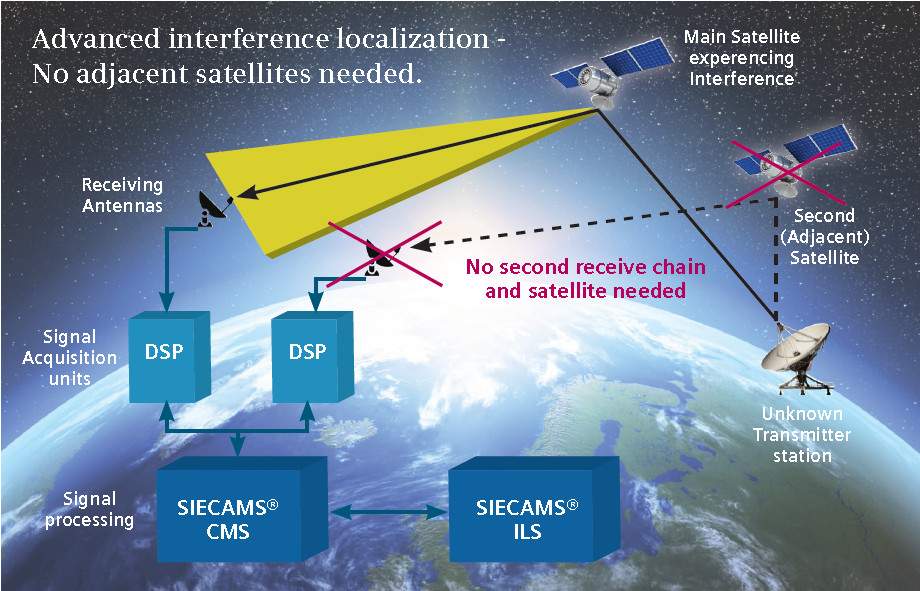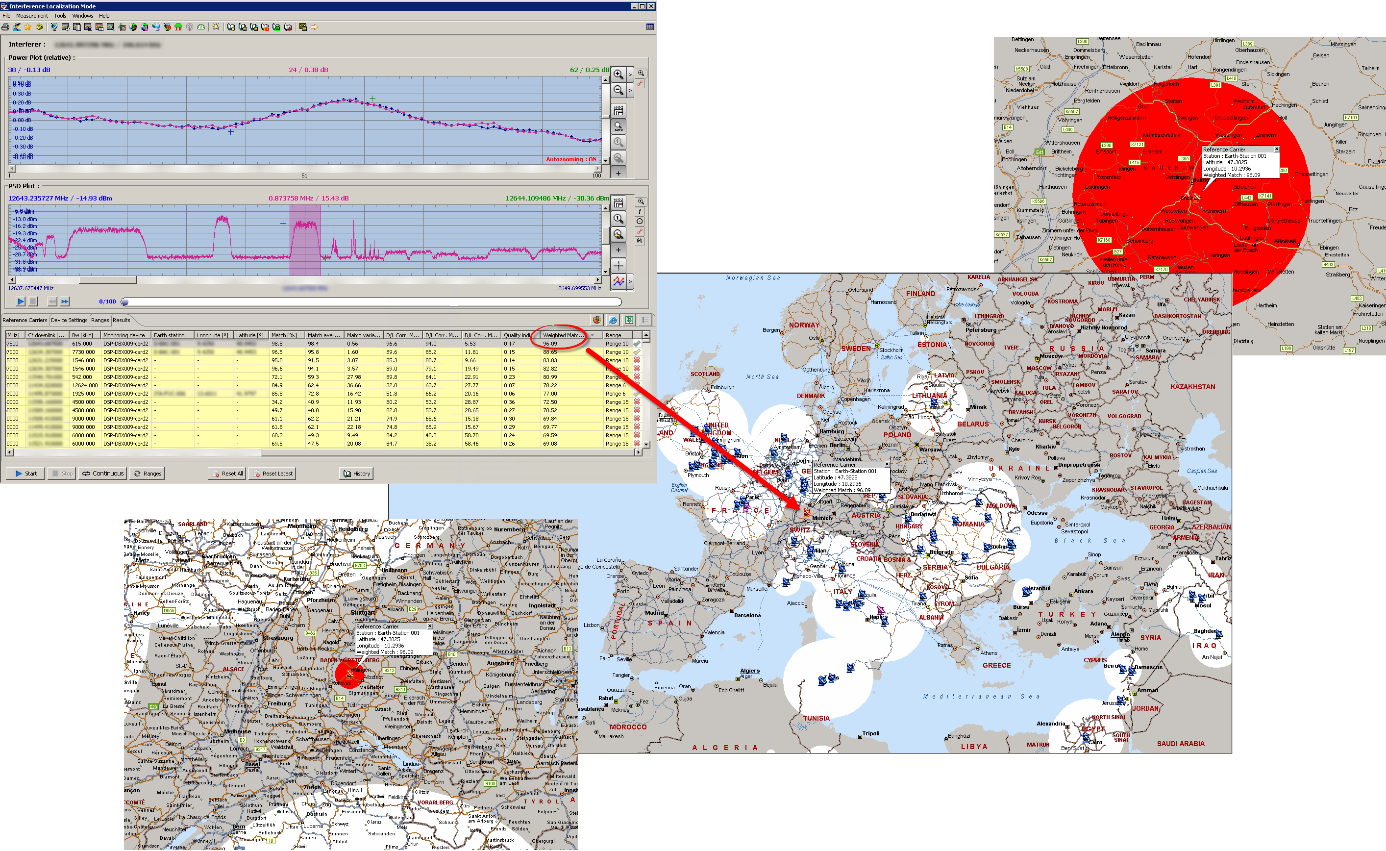 Satellite interference is comparatively rare. But when it does occur, it can be highly disruptive to end-users, whether homes, businesses, or governments. For satellite operators, the ability to rapidly identify and mitigate interference – whether intentional or not – has become vital.
Satellite interference is comparatively rare. But when it does occur, it can be highly disruptive to end-users, whether homes, businesses, or governments. For satellite operators, the ability to rapidly identify and mitigate interference – whether intentional or not – has become vital.
Up to now, interference geolocation systems required having two geostationary satellites in close proximity to each other in order to obtain sufficient crosstalk for reliable geolocation signal processing. Even though there are hundreds of geostationary satellites in orbit, many of these spacecraft have different uplink frequency ranges, polarisation, and footprint coverage, and this is especially true for military satellites and satellites working in Ka-band. This severely limits their use for interference geolocation.
Siemens Convergence Creators, based in Vienna, Austria, has been developing solutions for satellite interference mitigation since the early 2000s. With the support of ESA, the company developed a new geolocation system that works with a single satellite. It was developed into a commercial product through an ARTES Competitiveness & Growth Product Phase activity.
The new product, called SIECAMS ILS ONE, works by analysing the signal distortions primarily caused by satellite movement, atmospheric or weather influences and other environmental factors. By comparing such signal distortions of the interference signal with known signals, ILS ONE is able to identify the precise location of the interference source. According to the company, this results in a significant improvement in the resolution of interference issues compared with traditional satellite interference localisation systems.

“With the SIECAM product line, we have been successful at setting the benchmark for satellite monitoring and geolocation systems,” explains Erwin Greilinger, Product Line and Sales Manager at Siemens Convergence Creators. “But keeping up with the rapid developments in the satellite industry requires spending a significant amount of effort in the development of new technologies and tools. It's not only a financial challenge but also a technical risk, because very often you simply do not know if a new idea is feasible and will work as expected at the end.”
“For the ILS ONE product, we had different concepts in mind, but we were not sure whether any of them would actually work,” Greilinger continues. “This is why the ESA ARTES AT and C&G programs are so important for us. The structure of these programs is based on a step-by-step process whereby you verify and adjust your approach if needed after each stage.”
“From the very start of the first analysis of each concept up to the final product implementation, we also had the technical support of ESA,” he says. “For example, we did not know the impact of the atmosphere on satellite signals. We received very useful information from ESA about the scintillation effects in the atmosphere and the possible impact on RF signals. This then formed the basis for the approach we are now using very successfully for the ILS ONE product.”
“The SIECAMS single-satellite solution is a real game-changer for the satellite industry,” says Stephane Pirio, ESA Technical Officer for the activity. “It is much cheaper than traditional geolocation systems and this makes it particularly attractive for small- and medium-size satellite operators.”
SIECAMS ILS ONE has been very successfully used by Eutelsat since early 2016. Siemens Convergence Creators has a fully-fledged demo system which it can ship to customers and deploy in their environment for testing and verification purposes. According to the company, the German regulator BNETZA (Bundesnetzagentur) along with various operators are also now evaluating ILS ONE.




